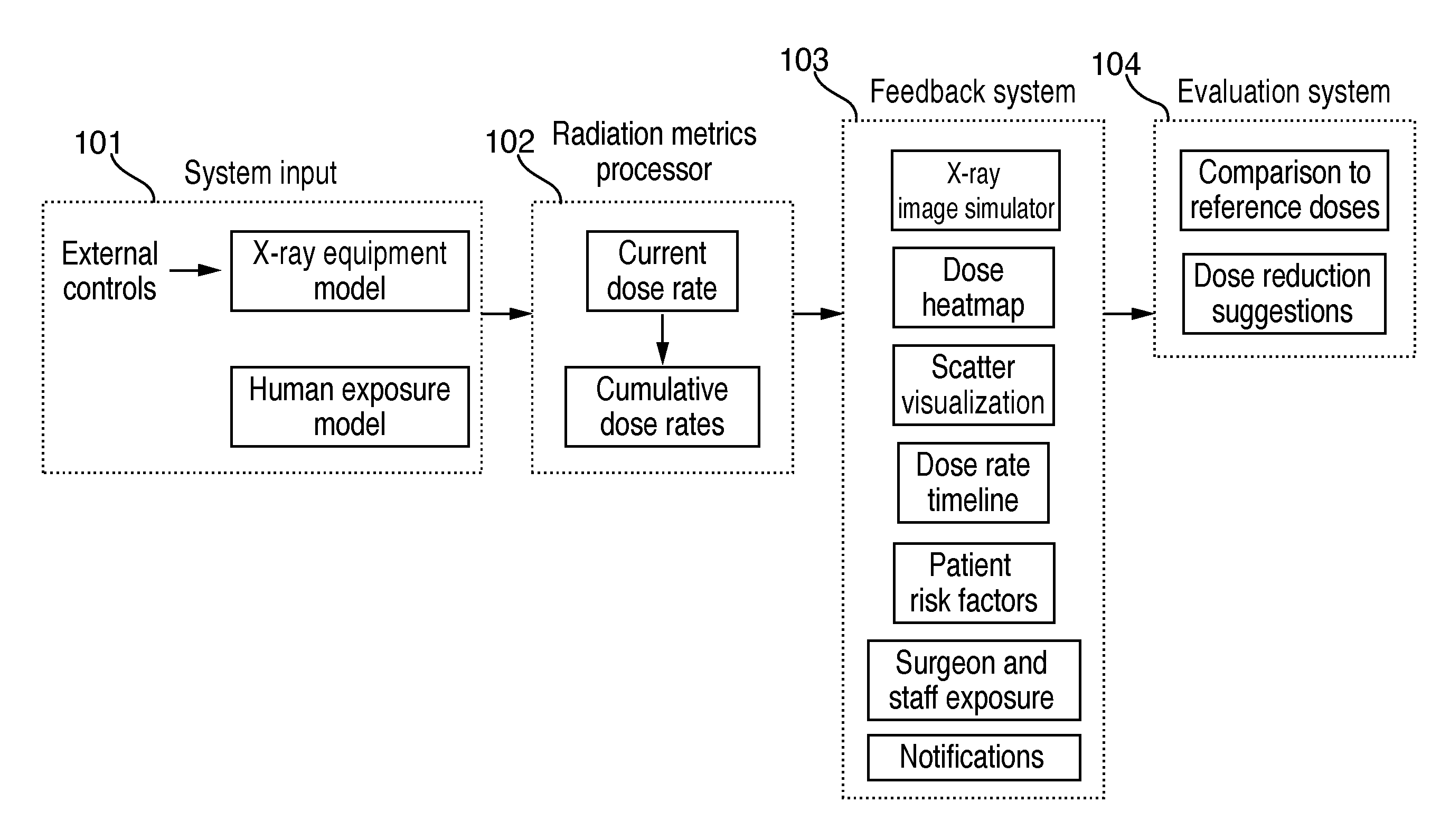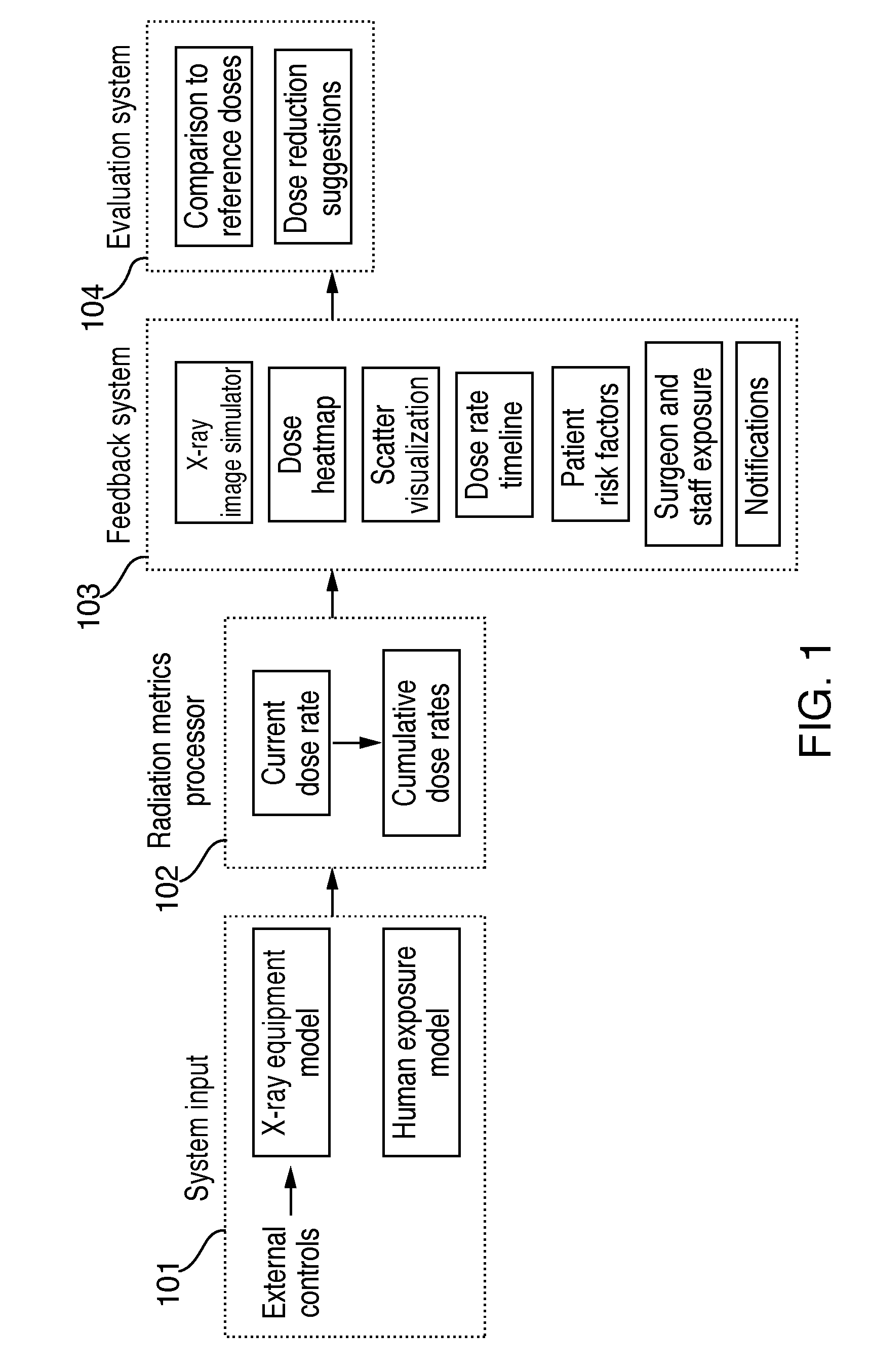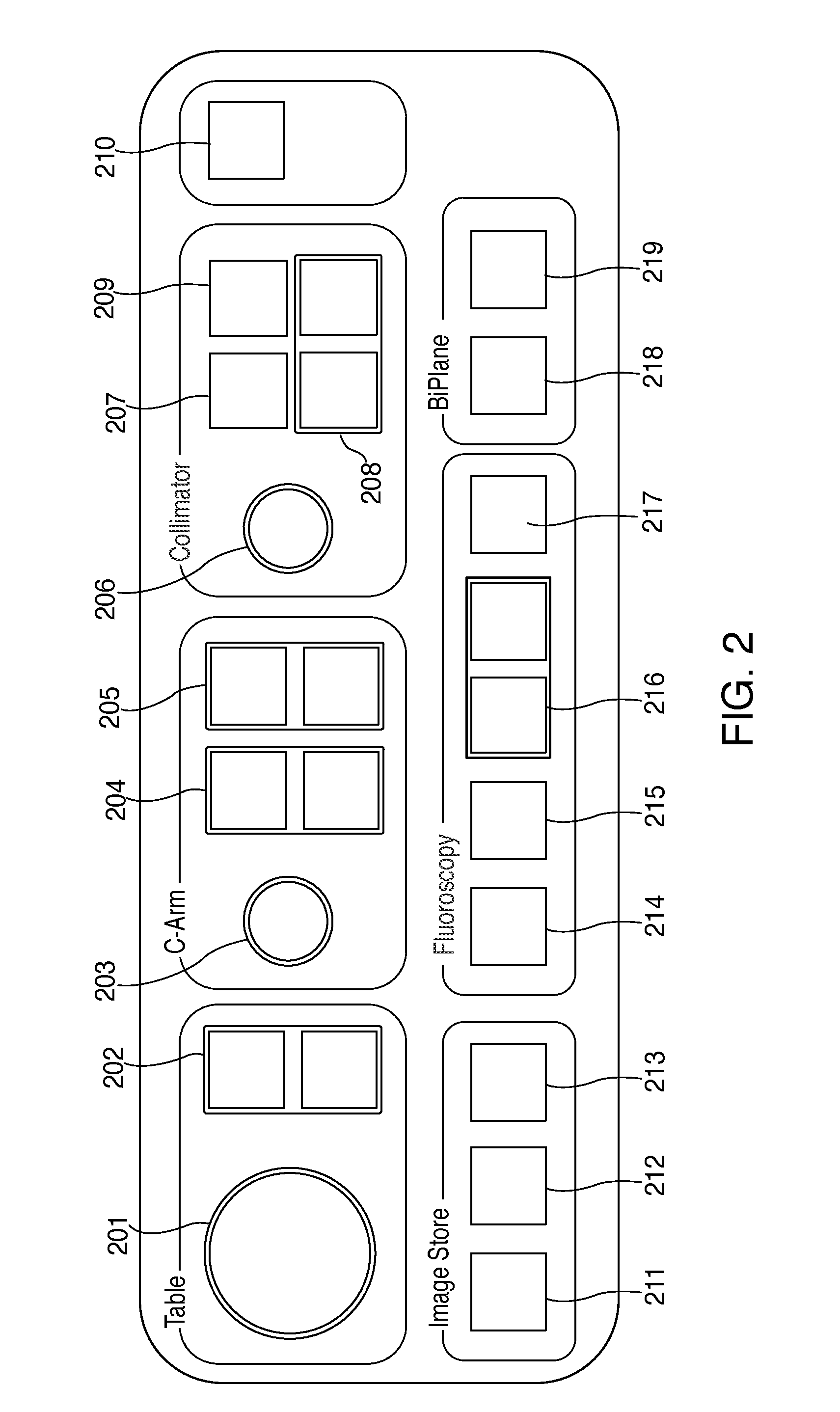However, exposure to radiation typically results in serious side effects, including microscopic damage to living tissue.
This type of
tissue damage is a risk to both the patient, as well as the medical teams that work in these environments, because of secondary “scatter” radiation.
Secondary
scatter radiation is harmful radiation that the
medical team is exposed to as a result of scattering off of a patient or other objects in the environment.
Fluoroscopic procedures are expected to
pose a higher risk of radiation exposure in comparison to CT-based procedures, in part due to recent advancements that have lowered the exposure in CT-based procedures.
Further, legislation and guidelines have recently been passed that limit the utilization of CT scans.
Since the team is performing an operation on the patient during interventional
fluoroscopy, it is not possible for them to reduce their own exposure by maintaining a
large distance to the x-ray source while imaging, such as is the practice for diagnostic CT scans.
However, it is very difficult for a medical professional to develop a good understanding of the harmful effects of such changes, since radiation is neither visible nor otherwise noticeable to humans.
Further, changes to a
single parameter or combination of parameters may change the quality of the x-ray image produced by the x-ray
machine, something which may influence correct
decision making in the delivery of treatment.
Because these parameters may be interrelated or functionally dependent, accurately determining how a change to a parameter affects
radiation dose rate or
image quality is computationally complex.
Currently, medical teams do not receive training that shows how a change to an operation setting during a fluoroscopic procedure causes a change to the radiation exposed to the patient or
medical team.
Training modules typically do not include any hands-on components, because there is currently no effective way of providing realistic hands-on training without using real radiation.
Although some training programs use empty operating rooms and “phantoms” as substitutes for patients, several drawbacks exist.
Specifically, these training programs still
expose medical teams to
secondary radiation and they block the operating room from being used for real procedures.
Furthermore, they do not show how changes to operating settings during an operation cause changes in radiation exposure and
image quality, or how operating settings may need to be changed at different points of an x-ray guided medical procedure to balance the trade-off between radiation exposure and
image quality.
Although techniques and systems for measuring, estimating, and visualizing radiation exposure have been developed, none of the presently known art describes a comprehensive solution for training medical professionals or teams on the effects of operating setting adjustments and their
impact on radiation exposure and image quality in a highly realistic and completely radiation-free simulated environment.
Further, systems for measuring, estimating, and visualizing radiation exposure do not show how changes in a
simulation parameter affect radiation dynamically during the course of a procedure.
Simulations that take into account multiple different
simulation parameters are often computationally complex, and generally executed in a time- and resource-intensive Monte Carlo-style fashion.
Further, to change a set of parameters, the
simulation is generally re-executed, and thus, unable to effectively show how changes to a parameter affect radiation during a live procedure.
Moreover, systems for measuring, estimating, and visualizing radiation exposure do not provide any meaningful information about the risk levels associated with different levels of radiation exposure.
 Login to View More
Login to View More  Login to View More
Login to View More 


